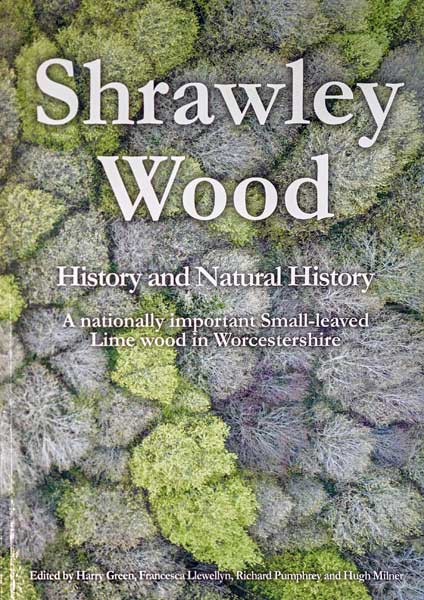Shrawley Book
SHRAWLEY BOOK Harry Green
Green, H., Llewellyn, F., Pumphrey, R., & Milner, H. (Eds) Shrawley Wood, History and Natural History. Greyhound Self-publishing, Malvern, on behalf of Worcestershire Recorders and the Limewood Working Group.
A new book charting the history and natural history of Shrawley Wood was published in May 2022. Unusual because of the domination of Small-leaved Lime in this ancient wood, Shrawley is a jewel in Worcestershire’s woodland crown and nationally important. This lavishly illustrated 600 page book has brought together in-depth research from historians, naturalists, archaeologists and foresters. It is a must-have for anyone interested in the history, flora and fauna of our woodlands.
This book was 14 years in the making. A4 in size, there are 88 chapters and 600 pages, many diagrams and photographs. A highlight is the use of canopy pictures taken from above by drone to study the timing of leafing. Many people have helped produce this book. There are 28 main authors both local and national and Worcestershire Recorders have provided several authors as well as support and data.
George Peterken writes in his Foreword:
“Readers will be immediately struck by the exceptional quality of the design and the variety of illustration, both of which will daunt and set standards for later accounts. They will also appreciate the balanced, interdisciplinary combination of historians, naturalists, archaeologists and foresters from which we gain a clear understanding of an ancient, semi-natural wood as the joint creation of natural processes and the actions of people over millennia. Shrawley certainly has over 900 years of continuous existence and may well have been derived directly from pre-Neolithic forest cover. It consists of species, soils and hydrology that have been tweaked but not substantially altered by use, cultivation and building, but its shape, structure and very existence has been determined by the actions of generations of people living near and far.
On the natural history side, the response of birds to the coppice cycle has been the subject of a scientific investigation and the published paper is reproduced here together with comprehensive background notes about local birds. The land caddis, which I have always associated with Norman Hickin and Wyre Forest, also occurs in Shrawley and several nearby woods, so it is good to have an account of this rare species. An interesting feature for me is that Shrawley’s plants have been recorded well enough to be sure that several species have become extinct, not just herbs and ferns, but also crab apple and spurge laurel. The losses of open-space plants from former coppice woods is not appreciated as much as it should be, so I will value having this worked example to cite.

Another botanical highlight is the documentation of Himalayan Balsam invasion: Shrawley, as it happens, is where I first became aware that this introduced species was spreading out from river banks. The fungi, for which the wood was originally famous amongst naturalists, still seem to be richly represented, with 1130 species on record, but, as John Bingham says, such a long history of recording should allow us to discover more about the dynamics of fungi in woodland if a modern ‘fungal blitz’ can be organised over several years.”
There are also extensive accounts of bryophytes, a detailed study of the invertebrates of two rot holes in lime trees, other insects, mammals and much else.

Shrawley Lime Blossom copyright: Roger Plant
